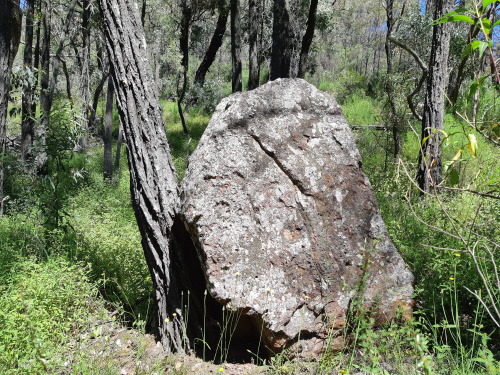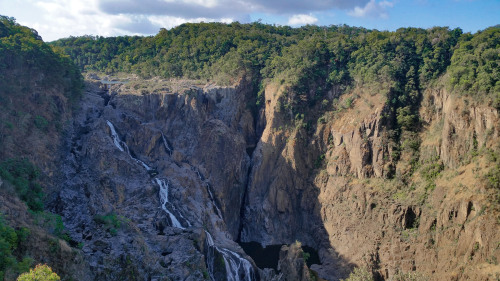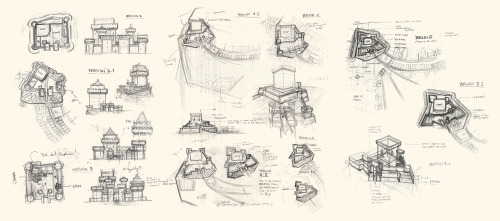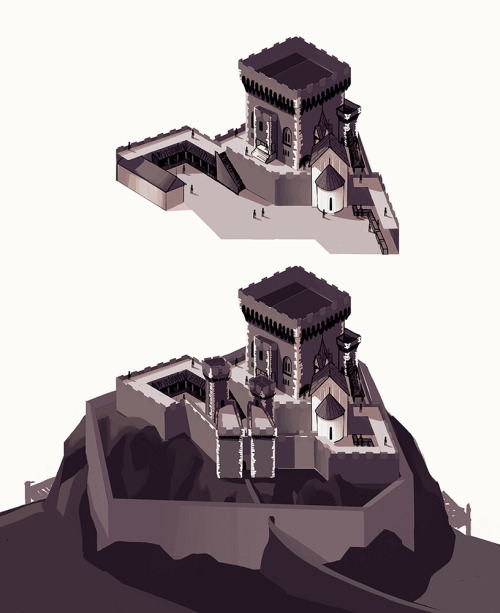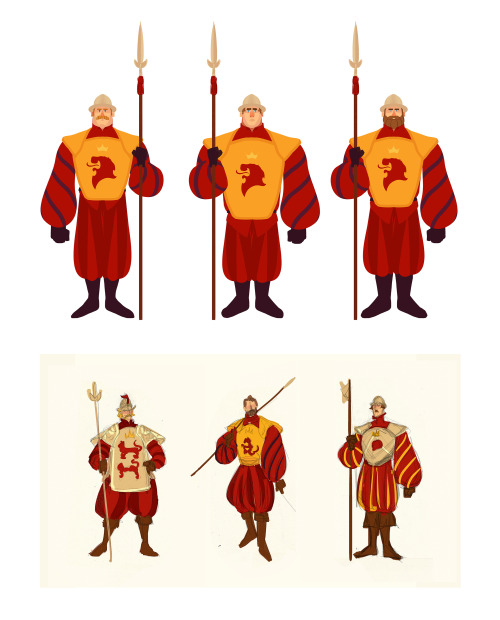#physical geography
Dykes and landscapes
Dykes most frequently occur as igneous rocks which once were liquid magma that intruded older rocks. Dykes form as sub-vertical to vertical linear sheet-like features and can be millimetres to kilometres wide.
Dykes can contribute to formation of interesting landscape features. For example, in above photograph, the dyke was more resistant to weathering and erosion than the rock it intruded, and so, it gave rise to a tall protruding wall known as the Breadknife, the Warrumbungle National Park. Whereas, in the photograph below, the dyke is less resistant to weathering and erosion, and so erosion of the dyke resulted in formation of a slot or a gully in the cliff near Kiama, south coast NSW.
Erosion of surface features (such as rocks) at different rates is referred to as differential erosion.
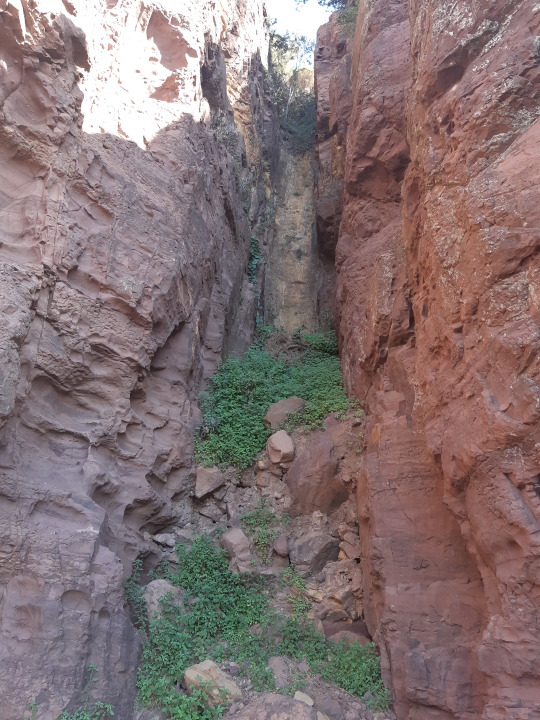
Post link
Eroded volcanic landscape. Approximately 15 million years ago this used to be a shield volcano (similar in structure to Hawai’i), but since its volcanism stopped the erosion has exposed the sides of the volcano. The most pronounced features are an ancient magma chambers. These would either feed magma to eruptions occurring on the surface or pulses of magma that did not make it to the top and have slowly crystallized at depth.
Warrumbungle National Park, Australia
Post link
When rock and paper end up with the TIE…
Rockfalls occur when rocks in the cliff face or a steep slope are destabilized and fall due to gravity pull. This can range from few rocks rolling down the hill to a massive rock avalanche that destroys the village. Either way, such moving rocks or a boulders can pick up speed and move with a lot of force, this can be damaging to anything that gets in their way. Bigger rockfalls can completely strip surface vegetation, knock down and uproot trees, damage soil and initiate erosion etc.
Surprisingly, this tree was strong enough to withstand the impact of this multi-tonne boulder rolling down.
Warrumbungles National Park, Australia
Post link
In the mountains you can get a lot of two things, rocks and sediments produced from the break down of those rocks. In the foreground and in the background around the feet of the mountains you can see two big piles. These are called alluvial fans. It is basically a dump of sediments that was flushed down the small valleys into a big valley. What runs between these two alluvial fans is a major river which is a conveyor belt of the sediment that slowly moves it down the valley, down the mountains, down the floodplains and eventually into the ocean.
See it as a highway for moving of sediment.
Nubra River, Himalaya.
Post link
Dunes pictured are at elevation of around 3000 metres (~9850 feet) above sea level, located in western part of the Himalaya Mountains.
Steep valley walls that stick out about 1000–2000 metres (3280–6560 feet) above the valley floor create a narrow corridor. This corridor captures major air mass movements which blow around the sands on the valley floor that eventually make up dunes.
Arch-shaped patters are sand layers within old dunes that have partially eroded. The erosion has exposed the internal structure revealing how the dune was constructed.
Nubra Valley, Ladakh, Himalaya
Post link
Wave rock around base of the Uluru monolith in Central Australia. An example of erosion-driven sculpting of the bedrock.
Post link
Coastal cliff erosion can create pillars when rock jointing or faulting are spaced at favourable intervals and angles. These will continue to be sculpted by the waves and often become tourist hotspots (such as the Twelve Apostles in Australia) or a refuge for sea birds, which can nest safely from predators.
Gannet colony at Muriwai, New Zealand
Post link
Barron Falls is a result of plate tectonics at their best. Eastern part of Australia was separated from the current mainland, sinking under the sea, while leaving an escarpment on the mainland. This is the escarpment and it has been eroding since that time. Left are cascades which formed by river flowing over the edge of the escarpment.
Kuranda, North Queensland
Post link
Finke River of Central Australia
This is Finke River which is a dry riverbed most of the time just like many other rivers in the Central Australia. Such rivers flow on the surface during powerful rainfalls, which can turn this dry sand patch into raging torrent. Water does not last long on the surface in the desert areas, and so it either evaporates or soaks into the soil where it then slowly makes its way into the artesian basin (underground water pool, the groundwater system). Actually, the groundwater is a major water source for people living in the dry centre of Australia.
Fun fact!
The upper section of the Finke River was deduced to be around 350 million years old, what makes it one of the oldest rivers in the world. It means it has flown across the continent long before the proto-dinosaurs have even evolved.
Post link
Part 6/6 - The Kingdom of Florin
Part 1 - The Family|2 - Style|3 - The Sicilian Assassins|4 - Buttercup and Westley|5 - The Prince and the Count
The seat of power for the Kingdom of Florin is a Military Fortress built on top of a seaside cliff.
Instead of elegant Gothic spires which was popular during the 15th and 16th century, Florin Castle is a bulky and imposing fortress reflecting the Military nature of the country, its simple people, Buttercup’s prison-like experience, and its ruler — Prince Humperdinck.
One of the challenges I encountered for the castle design was keeping the colours saturated enough to match the palette of the project while keeping the emotional geography of “prison” in tact. Although a violet palette was explored, the red brick that is common in Northern European architecture gave a more militaristic no frills impression that is more in line with the Kingdom and its Prince.
After many sketches, I realised that a country celebrating its 500th anniversary would probably have a castle built far before the current century. So incorporating a bulkier Romanesque style Keep as the castle’s foundation is what finally made things come together and give it a solid direction. Since Florin is a Militaristic state, it would make sense for them to continually be making Military advances, so one of the Castle’s most recent evolution/natural progression is a towards a very early prototype of a Bastion Fort. This makes Florin castle the most advanced, secure, and fortified structures in the land while upping the stakes for the infiltration during the near end of the series.
Fun Fact! While looking for references of Danish Castles, I came across an old map of Kronborg Castle. (Just google “old map of Kronborg castle”, you’ll see it right away) I thought it looked super familiar and I realised that it actually looked very similar to the layout of the Map of Florin and Guilder! So I included the bonus map I was required to submit.
Post link



